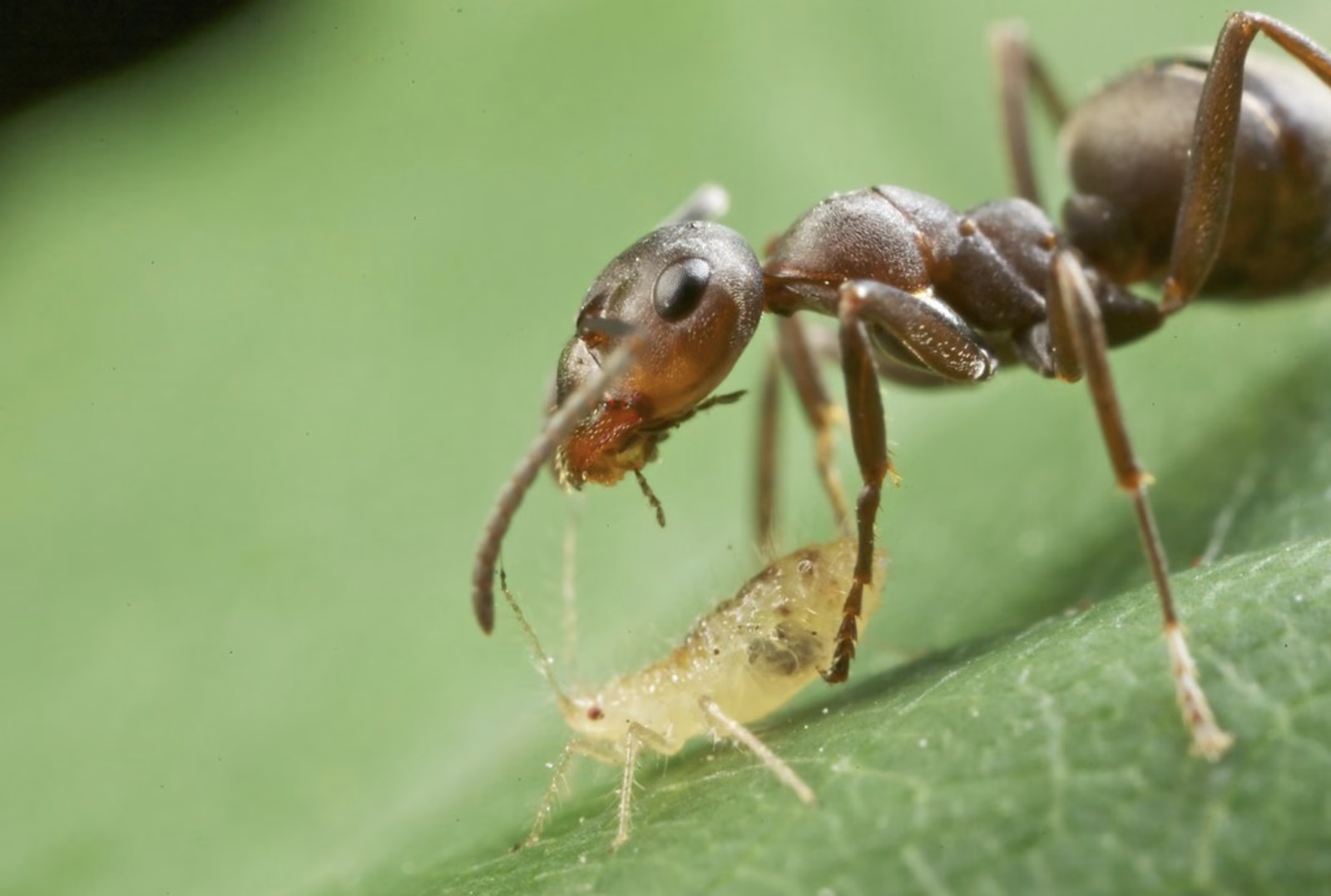Domestication yields more than cute puppies and tasty chickens. It is neither strictly genetic nor exclusively a human endeavor. It has AI at its cards and challenges going feral as an alternative. A journey.
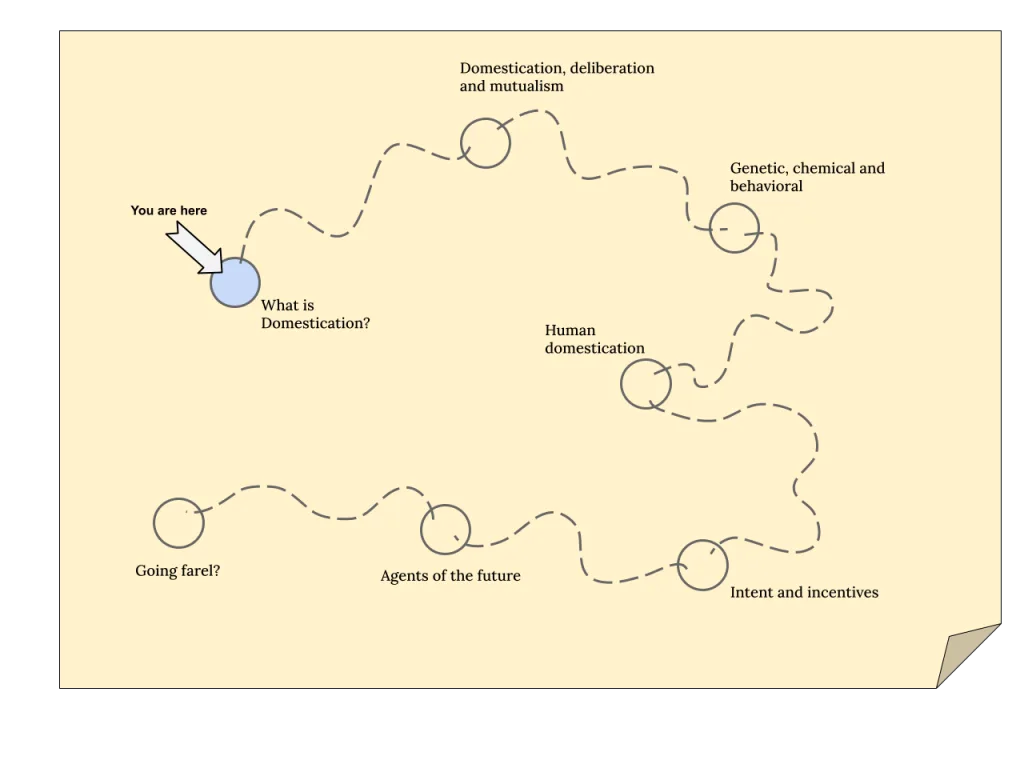
Let’s take a trip down domestication-lane. But first a reminder what domestication is. Domestication refers to the process where humans adapt wild plants and animals for food, work, companionship and other purposes. This involves selecting and breeding individuals with desirable traits, often resulting in genetic, behavioral and physical changes over generations.
Wolves began scavenging near human settlements. Their presence likely proved beneficial to humans by deterring other animals. Through careful selection and breeding of friendlier wolves over generations, humans eventually created what we know today as dogs.
People sought sweeter, redder fruits with a green skin. They selected those with desirable traits, discarded others, repeated the process and eventually cultivated the modern watermelon.
Over many generations, through deliberate selection, crossing and interbreeding, humans “created” the domesticated creatures we have and use today.
Humans are not the only species that practice domestication. Ants domesticate animals like aphids, plants domesticate other plants and some plants, such as corn, arguably domesticated humans.
Deliberation: Domestication vs Mutualism
Consider cleaner fish. Can they be considered domesticated by sharks? They evolved from earlier fish and developed traits beneficial to sharks, almost like a useful pet.
Well, no.
For domestication to occur, there must be deliberation. It’s insufficient for two species to co-evolve and form a symbiotic relationship, which is known as mutualism.
In order for domestication to occur there needs to be deliberation on the part of the “domesticator”. It needs to deliberately aim for specific traits or behavior and influence the domesticated creature to have them. This is why dogs are friendly, rice grains shaped as they are, ants hoard aphids and corn, people (“forcing” them to become sedentary, change culture and evolve tools).
Are ants and corn conscious of their deliberation? Does it matter? I’ll get back to that later but first, is domestication done strictly by genetically selecting traits?
Why Wait: Non-Genetic Domestication
Genetic selection is a lengthy process. Desired mutations must occur and their dominance encouraged through careful breeding and crossing over generations to achieve domesticated traits.
But are all traits genetic? No, since not all traits are “hardware”. Some can and are “programmable”.
Calm nature, susceptibility to training and adaptability to different environments are all traits valued in domesticated creatures. Some make the difference between being domesticable–to not (the latter includes Zebras, Gazelles, Pandas, Cheetahs and plants like Bamboo and Truffles).
This presents a major benefit to domestication desires. Enters, Chemical Domestication. Ants secrete pheromones to calm aphids (preventing them from leaving the colony), people use smoke to calm bees, Acacia trees chemically encourage ants to defend them from herbivores.
Chemical is not the only non-genetic way to influence the domesticated creature. One can directly alter the behavior of the creature to get the desired traits.
Behavior domestication, the art of making a species do what you want without selecting for favorite traits (genetic domestication) or influencing them chemically. Ants domesticate aphids and fungi by herding and protecting, Cuckoo chicks by call mimicry, Orcas domesticate Dolphins by influencing and teaching and – Meerkats, Wolves and Slave-making Ants – all domesticate their own kind using different behavior-manipulation tactics.
The last group brings us to the next station in our journey, the spooky-station. But first a reminder where we visited:
- We saw what domestication is and its need for deliberation
- We learned that deliberation does not mean consciousness
- And that domestication is not exclusively genetic – chemical and behavioral are no-less effective
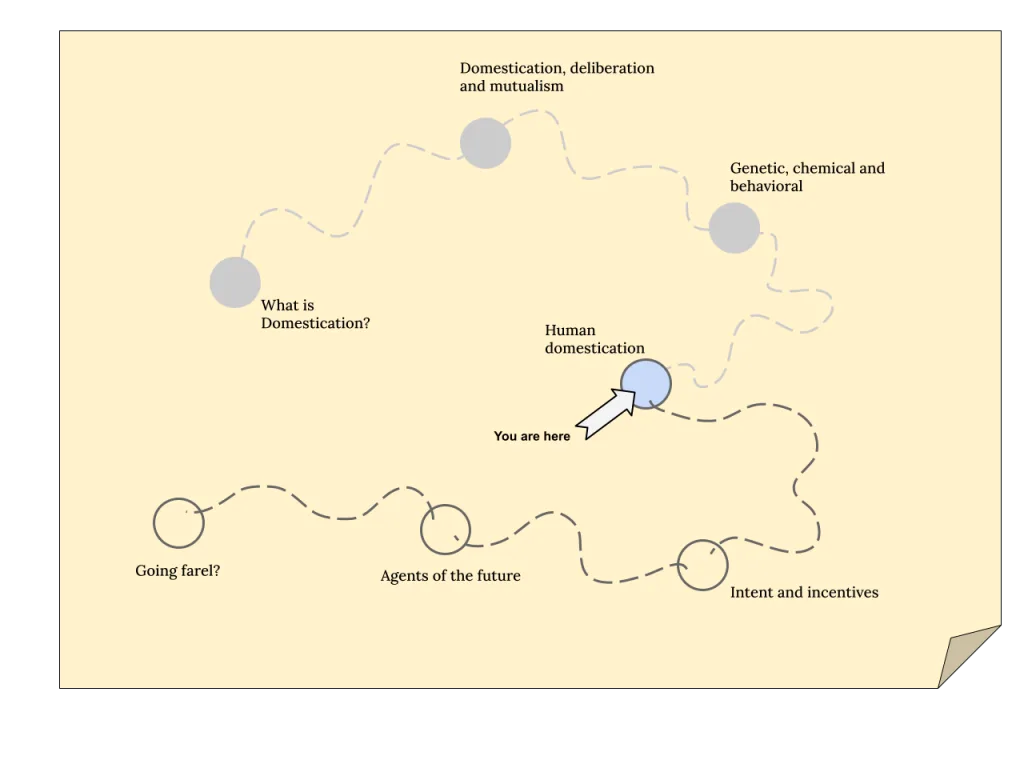
Human Domestication by… Other Humans
Why would any human want to domesticate other humans? Surely you do not mean to grow them for food, right?! Right.
We also do not (usually) eat bees, dogs, cats, parrots, mice, donkeys and silkworms. And neither bamboo, cotton nor roses. We also domesticate creatures for labor, protection, produce, aesthetic, companion and other reasons.
How can people benefit from the domestication of other people?
- They can labor for them
- They can get the fruit of their labor (money)
- They can fight for them
- They can give their time
- They can surrender their body
Why might political, religious, or capitalist leaders want their subordinates domesticated? Consider the reasons above. These practices are evident in enterprises, political systems, workplaces and cultural institutions. Instagram, TikTok, McDonald’s, M&M’s, Orange Juice, Nike, Mercedes, Ozempic, Pesticides, Donations, Taxes, CNN, MBAs, Mortgages, Wars.
The non-genetic methods are more obvious. Using chemicals – Through the manipulation of sugar, salt, fat, dopamine, endorphins, oxytocin, serotonin, opioids, caffeine, nicotine, alcohol. Here’s an example – Howard Moskowitz, a psychologist, found the “bliss point” – a specific amount (no more no less) of sugar that makes consumers want more of the product but does not make them feel ill. Chemistry making consumers consume and buy more (and surrender their body).
Using behavior – Through the manipulation of values, morals, religions, education, nationalism, right and wrong, logic, language, marketing, gossip, news, entertainment, games, social. Want an example? Open Instagram, the news, drive to the supermarket. Everything created by a company or person of interest (politician, religious leader) around you is designed to get something. From your money to your life.
Even genetic methods are not taboo. Over the generations, which couples society encouraged? The docile and conformative or the rebellious and non-orthodox? (Yes, a bit speculative and ignores nature vs nurture. But it does stand the test of logic).
So are all leaders evil beings trying to manipulate us into docile sheep, guard dogs and worker bees? I think not.
I do not believe they have deliberate intention or awareness. And even if so – they would not consider being a “domesticated” human to be negative. After all – isn’t the house cat better off snuggling on the sofa compared to fending for itself out there in the cold?
Isn’t it more “cultural”?
No Intent, Yes Incentive
As Charlie Munger famously said: “Show me the incentive and I will show you the outcome.”
An ant does not need to have awareness or intention in order to domesticate aphids. It does have an incentive though. And incentives are what drives leaders to move us towards the farm-house. Money, power, status, recognition, control, rank, survival, fulfillment are all powerful incentives. Whichever it is – the incentive triggers the behavior of the farmer.
Let us not forget emergence. The invention of agriculture emerged the domestication method referred to as organized religion and the industrial revolution emerged the chemical tool referred to as sugar (and a few others).
But most domestication techniques applied to humans are driven by incentives. Want more revenues? Get humans to give you more of their time, resources and outputs. How? Plant ideas and control their chemistry. How do you know what will work? Try, measure, iterate.
Sounds like selective evolution? You are spot-on.
Domestication by Agents
Which takes us to our next station, Agents.
The hormones used by ants, the sugar and the marketing, ideas and language of humans are all agents operating for the domesticator. These agents are tools – which when given a goal, access to resources and the target – work to produce the desired behavior.
Let’s take a futuristic example.
Say I am a leader driven by incentives. I want people to not just pay my organization growing sums of money, I also want them to recruit other people that will also pay growing sums of money. I have access to behavioral or chemical agents (or maybe even both) but I do not know what is the best way to deploy them for optimal results.
In the past I would have allocated resources and rely on iterations. Invention, trial, error, improve and hope my resources do not deplete before I succeed. Luckily we are in the future. And we can let Agentic AI do the work for us. Give it the goal and access to resources (chemical, psychological or both) and let it find and deploy the optimal solution to make people buy and influence others to buy as well.
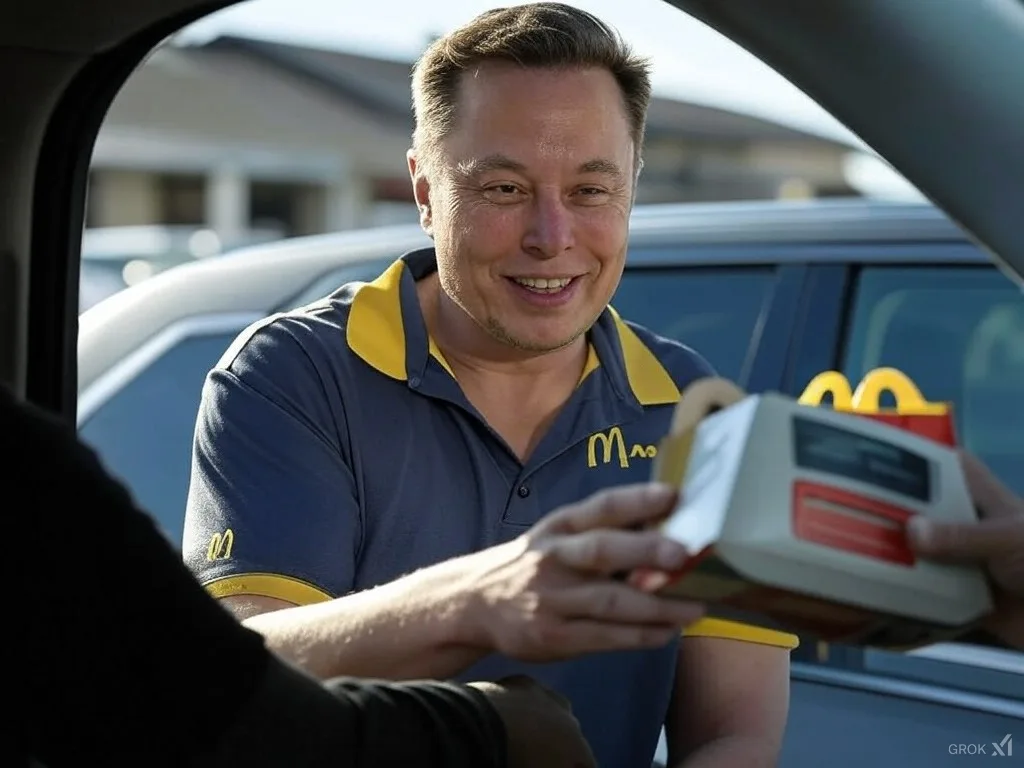
If this is a dream making you sweat or a sweet dream depends on the end of the leash you are attached to. Not just as a domesticated-domesticator (or stock owner) but also if you consider being domesticated something you should embrace – making your life ever more comfortable.
What if the domesticated sought freedom from these influences? This brings us to the concept of going feral, a deliberate break from domestication. The final station on our journey.
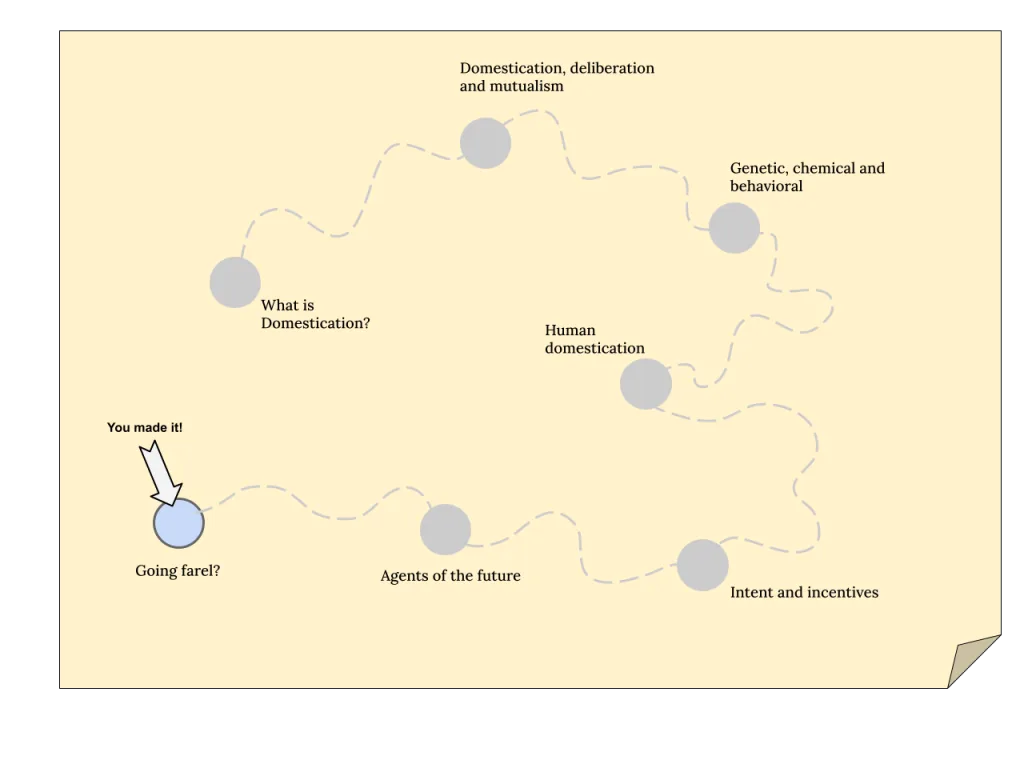
Going Feral: To What, Why and How
Going feral means rejecting domestication and embracing a lifestyle closer to that of our pre-agrarian ancestors, wild, self-reliant and free from constraints. It means to be closer to the last station genetic evolution left us at. Being social, kind to your community, gossipy, strong, lean, curious, inventive, clever, few possessions, loyal-ish, lazy, content. Think hunter-gatherer in a group of up to 150 people in a world inhabited by a total of 10 million of your species.
But do we even want to be feral? Aren’t we comfortable by the fire with a slice of Lasagna? I say it is better to have a pet flap than be blind to being domesticated. We can choose to go out, stretch and chase a few mice to remember where we came from. What is natural and where the barn starts.
Want to take a step further? Here’s an instant-article. Paste the following line into ChatGPT:
| How can a human – exposed to everything that domesticates us – go feral? |
See you out there, wild-thing!
